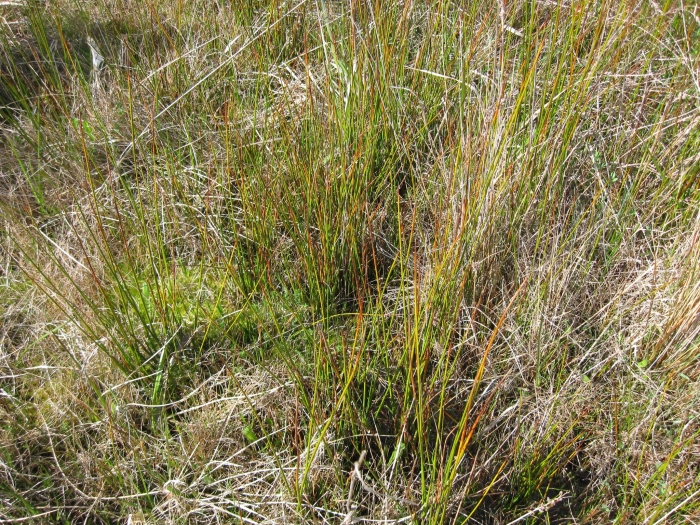Soft Twig Rush
(Machaerina rubiginosa)
Soft Twig Rush (Machaerina rubiginosa)
/
/

Ed Wilson
CC BY 4.0
Image By:
Ed Wilson
Recorded By:
Copyright:
CC BY 4.0
Copyright Notice:
Photo by: Ed Wilson | License Type: CC BY 4.0 | License URL: http://creativecommons.org/licenses/by/4.0/ | Rights Holder: Ed Wilson | Publisher: iNaturalist | Date Created: 2016-10-13T10:49:15-07:00 |













Estimated Native Range
Summary
Machaerina rubiginosa, commonly known as Soft Twig Rush, is an evergreen perennial sedge native to wetlands, swamps, and along stream banks in the Eastern Hemisphere Tropics, including regions such as Southeast Asia, the Pacific Islands, and Australia. It is well adapted to its native habitat, thriving in areas that are seasonally or permanently wet. This robust sedge can reach a height of 4 meters (13.1 ft) and a width of 2 meters (6.6 ft), with upright foliage that contributes to its dense, grass-like appearance. The plant produces inconspicuous brown flowers from August to March, which are not typically grown for their ornamental value.
Soft Twig Rush is valued for its ability to form large dense swards, making it an excellent choice for erosion control and habitat restoration in wetland areas. It is also used in the creation of artificial wetlands and water purification systems due to its tolerance of nutrient-poor soils and ability to grow in water up to 50 centimeters (1.6 ft) deep. The plant’s height varies depending on moisture availability, growing taller in consistently damp conditions. In cultivation, it prefers full sun but can tolerate partial shade, requires medium amounts of water, and grows best in soils with fast to medium drainage. While it is not known for significant pest or disease problems, it can become invasive if conditions allow for unchecked growth, so care should be taken when planting it outside its native range.CC BY-SA 4.0
Soft Twig Rush is valued for its ability to form large dense swards, making it an excellent choice for erosion control and habitat restoration in wetland areas. It is also used in the creation of artificial wetlands and water purification systems due to its tolerance of nutrient-poor soils and ability to grow in water up to 50 centimeters (1.6 ft) deep. The plant’s height varies depending on moisture availability, growing taller in consistently damp conditions. In cultivation, it prefers full sun but can tolerate partial shade, requires medium amounts of water, and grows best in soils with fast to medium drainage. While it is not known for significant pest or disease problems, it can become invasive if conditions allow for unchecked growth, so care should be taken when planting it outside its native range.CC BY-SA 4.0
Plant Description
- Plant Type: Grass
- Height: 1-3 feet
- Width: 1-3 feet
- Growth Rate: Moderate
- Flower Color: N/A
- Flowering Season: Fall, Winter
- Leaf Retention: Evergreen
Growth Requirements
- Sun: Full Sun
- Water: Medium
- Drainage: Fast, Medium
Common Uses
Bee Garden, Border Plant, Butterfly Garden, Drought Tolerant, Low Maintenance, Potted Plant, Water Garden
Natural Habitat
Wetlands, swamps, and stream banks in the Eastern Hemisphere Tropics
Other Names
Common Names: Flat Leaf Twig Rush, Common Twig Rush
Scientific Names: , Machaerina rubiginosa, Baumea rubiginosa, Baumea crassa, Baumea riparia, Cladium glomeratum, Machaerina nipponensis, Machaerina rubiginosa var. nipponensis, Cladium riparium, Machaerina crassa
GBIF Accepted Name: Machaerina rubiginosa (Biehler) T.Koyama